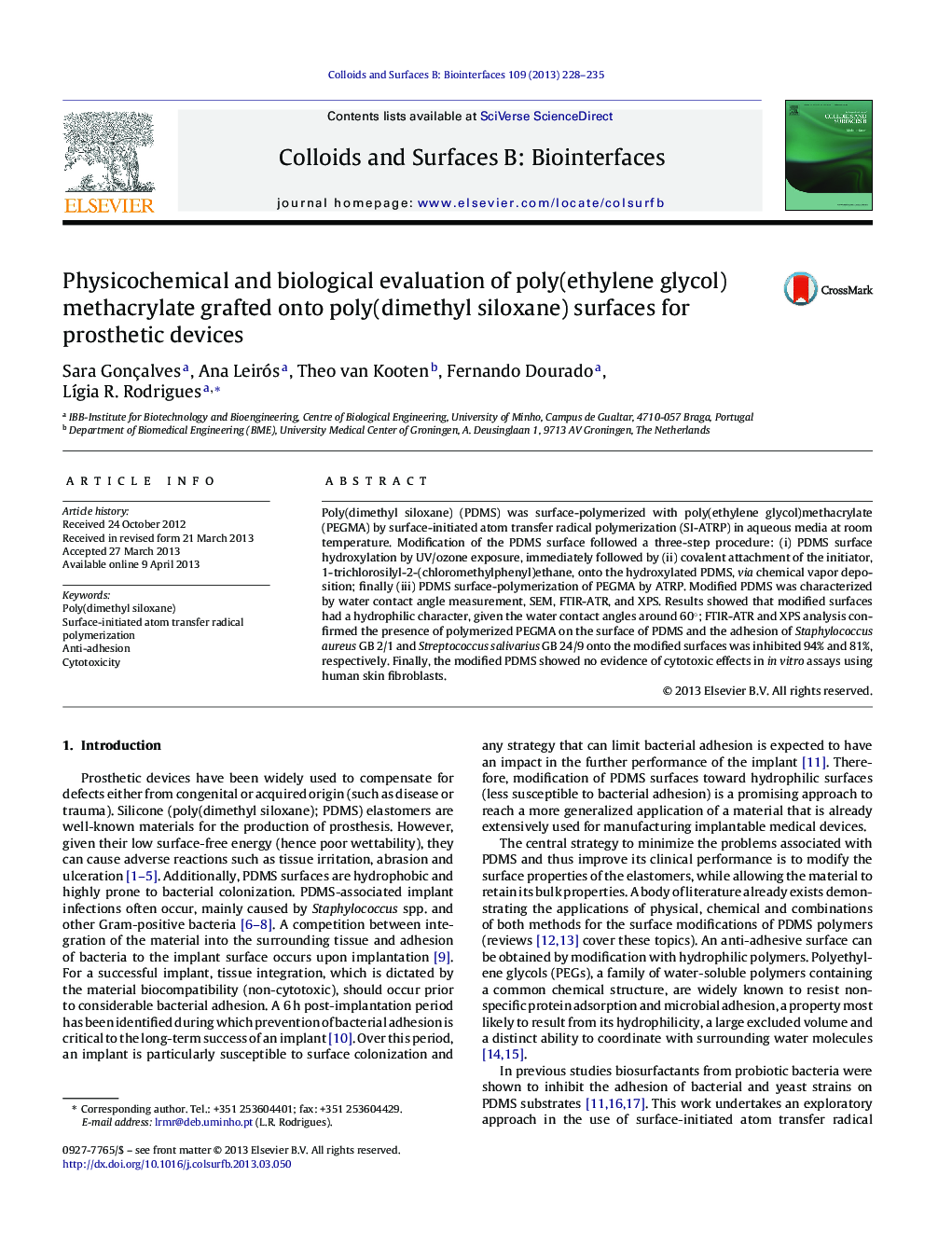| Article ID | Journal | Published Year | Pages | File Type |
|---|---|---|---|---|
| 600101 | Colloids and Surfaces B: Biointerfaces | 2013 | 8 Pages |
•Poly(dimethyl siloxane) (PDMS) was successfully modified with PEGMA by surface-initiated atom transfer radical polymerization (ATRP).•Modified surfaces showed a hydrophilic character with water contact angles around 60°.•Bacterial adhesion onto the modified surfaces of Streptococcus salivarius GB 24/9 and Staphylococcus aureus GB 2/1 was inhibited by 81–94%, respectively.•Modified surfaces showed no evidence of cytotoxic effects on human skin fibroblasts cultures.
Poly(dimethyl siloxane) (PDMS) was surface-polymerized with poly(ethylene glycol)methacrylate (PEGMA) by surface-initiated atom transfer radical polymerization (SI-ATRP) in aqueous media at room temperature. Modification of the PDMS surface followed a three-step procedure: (i) PDMS surface hydroxylation by UV/ozone exposure, immediately followed by (ii) covalent attachment of the initiator, 1-trichlorosilyl-2-(chloromethylphenyl)ethane, onto the hydroxylated PDMS, via chemical vapor deposition; finally (iii) PDMS surface-polymerization of PEGMA by ATRP. Modified PDMS was characterized by water contact angle measurement, SEM, FTIR-ATR, and XPS. Results showed that modified surfaces had a hydrophilic character, given the water contact angles around 60°; FTIR-ATR and XPS analysis confirmed the presence of polymerized PEGMA on the surface of PDMS and the adhesion of Staphylococcus aureus GB 2/1 and Streptococcus salivarius GB 24/9 onto the modified surfaces was inhibited 94% and 81%, respectively. Finally, the modified PDMS showed no evidence of cytotoxic effects in in vitro assays using human skin fibroblasts.
Graphical abstractFigure optionsDownload full-size imageDownload as PowerPoint slide
